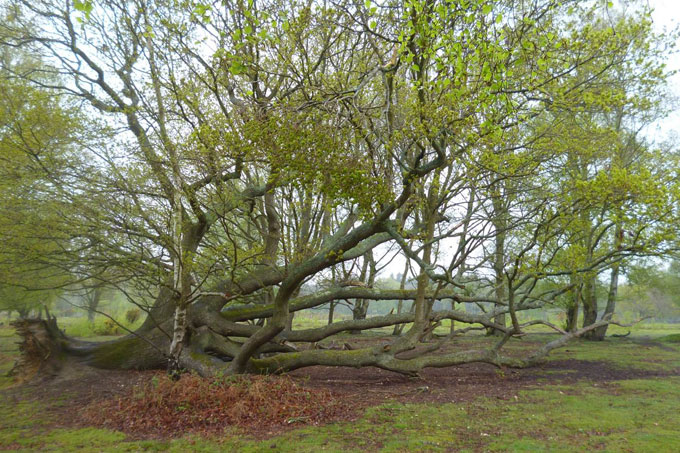Professor Peter Vujakovic explains how the ‘veteran’ tress of 1987’s Great Storm can show us the resilience of nature.
The night of 15-16 October 1987 witnessed one of the most devastating storms to hit southern England in living memory. The storm surge of 1953 had faded in memory, and the previous ‘Great Storm’ to wreak havoc in southern England had occurred long ago in 1703.
The 1987 storm led to serious loss of life, to widespread destruction of property, and to major power outages. It is, however, its legacy on the landscape that remains a potent reminder of that fateful night.
The winds, gusting to 100mph, caused some 15 million trees to be toppled, tilted or snapped. Many fell across roads, rail and power lines and were quickly removed. The clearance of other areas was to take much longer.
Many important heritage sites were affected. Up to 20,000 trees were thrown at Wakehurst Place, Sussex, while great swathes of woodland were flattened at Chartwell, Winston Churchill’s country residence.
As Tom Fort noted in his book, Under the Weather: “At the time, the havoc and devastation inflicted that October night were reported …in… apocalyptic terms, as if a mortal blow had been struck at us and our heritage, as if things would never be the same again.”
The Tree Council demanded that money be made available to replant before scrub invaded, while the National Trust seemed to perceive sinister intent in the disaster, claiming: “The great storm desecrated the past and betrayed the future.”
But what lessons do the woodlands of Kent really offer us thirty years later? The fact is, the trees that were blown down rarely died, but even those that did provided the rotting wood required for the conservation of many species including the stag beetle.
Sadly, largely numbers of fallen trees were cleared and burned. Had they been left alone, as they were in some conservation woodlands, they would have thrived.
There is a common belief that fallen trees die, decay and create canopy gaps that provide the sunlight and nutrients that seedlings need to thrive. In actuality, as long as fallen trees retain some fifth or sixth part of their roots intact, they were able to survive by re-orientating the growth of their crown. Even where out-shaded by nearby trees, they abort their old crown and instead throw up new growth (epicormic) from the base of their trunk, and still thrive.
A study undertaken by Canterbury Christ Church University over twenty years after the storm showed that three-quarters of toppled trees in an area of the North Downs were still alive and well. These trees often out-competed neighbouring trees; similar results have been found elsewhere.
Each toppled survivor of the storm, a ‘veteran tree’, has a different story to tell, and this can be elicited by direct observation of how each has dealt with its circumstances. Trees are genetically very ‘plastic’ and adaptable to drastic change.
Frequent visits by staff and students of Christ Church to field sites in both Blean ancient woods complex near Canterbury, and to the North Downs, show that the situation is little changed in the last decade. What the Great Storm has taught us is that nature is extremely resilient.
Peter Vujakovic is Professor of Geography in the School of Human and Life Sciences. His work on the impact of the Great Storm on woodland trees and phytobiography has been published in the Arboricultural Journal, the journal of the Arboricultural Association.
 Expert comment
Expert comment Jeanette Earl
Jeanette Earl 1944
1944


